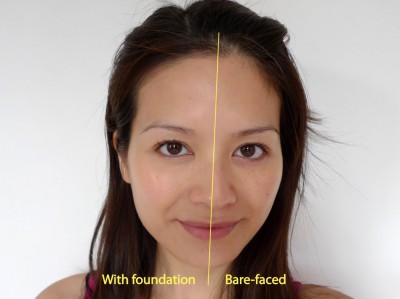Foundation
Concealing Skin Surface Imperfections
Before you start:
- Always apply makeup to clean skin (follow the routine appropriate for your skin type).
- Make sure you have all the appropriate makeup tools and products you need.
- Apply makeup in a well-lighted area.
- Use a magnifying mirror to check your blending and overall smoothness.
Foundation is the cosmetic product that women pay the most attention to. It can make the difference between having a natural, flawless finish and looking as if you are wearing a mask. Select a foundation for your skin type that matches your underlying skin tone exactly.

- Using the flat, smooth surface of a round, nonporous synthetic sponge, pour some foundation onto the sponge, then transfer the foundation in dots and dabs all over the face and the eyelids.
- You can also use your fingers to transfer the foundation in dots from the bottle to the face. Use your sponge to blend the foundation down and out over the face.
- Use the edge of the sponge without foundation (or turn the sponge over to the clean side) to dab or buff away any excess product. Do not apply foundation on the neck or under the chin.
- Your sponge is an exceptional blending tool that can be utilized throughout the makeup application process.
Note: If you are relying on a foundation with sunscreen for sun protection, you must apply a complete, even layer over the entire face. A thin or too sheer application will not provide adequate protection from the sun.
Concealers
Concealers are of a denser composition than regular foundations and are generally available in sticks, tubes, pots, and creams. Concealers can be used to cover blemishes, dark spots, ruddy areas, marks, veins, freckles or under eye circles.
Your concealer should be one shade lighter than your foundation (and only in extreme cases should you use a concealer two shades lighter).
Using a concealer that is too light or too pink will give the appearance of ‘owl eyes’. In other words, it will emphasize the dark area instead of concealing it.
